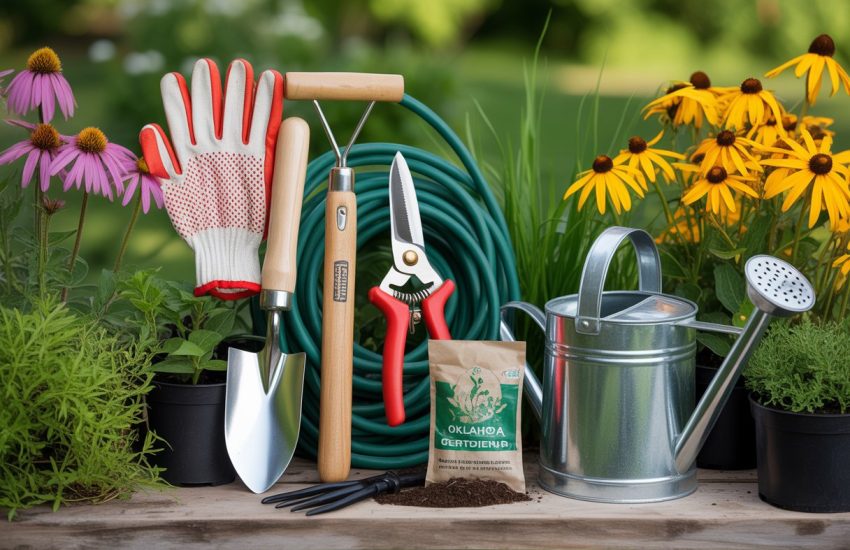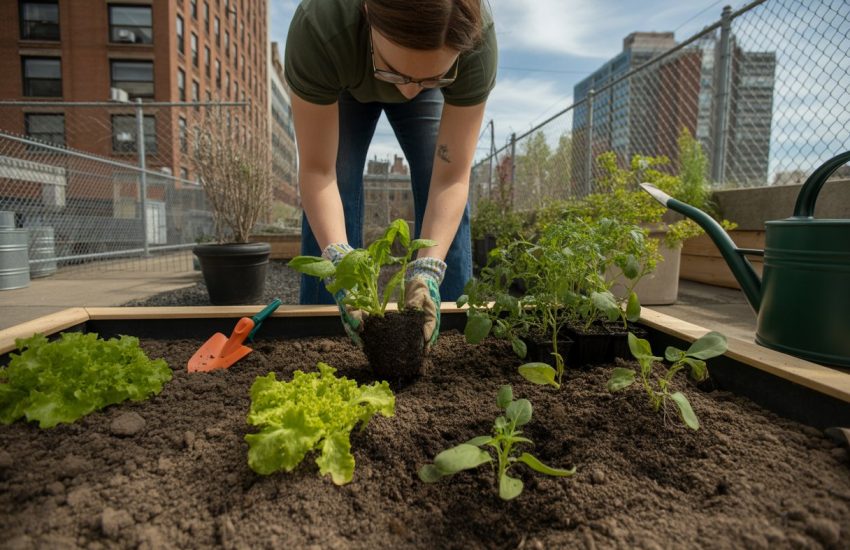Growing Tomatoes for Beginners: Tips and Tricks for a Successful Harvest
Growing tomatoes can be a rewarding experience for beginners. Tomatoes are a popular and versatile fruit that can be used in many dishes, making them a staple in many households. While growing tomatoes may seem like a daunting task for those new to gardening, it can be a fun and easy process with the right guidance.
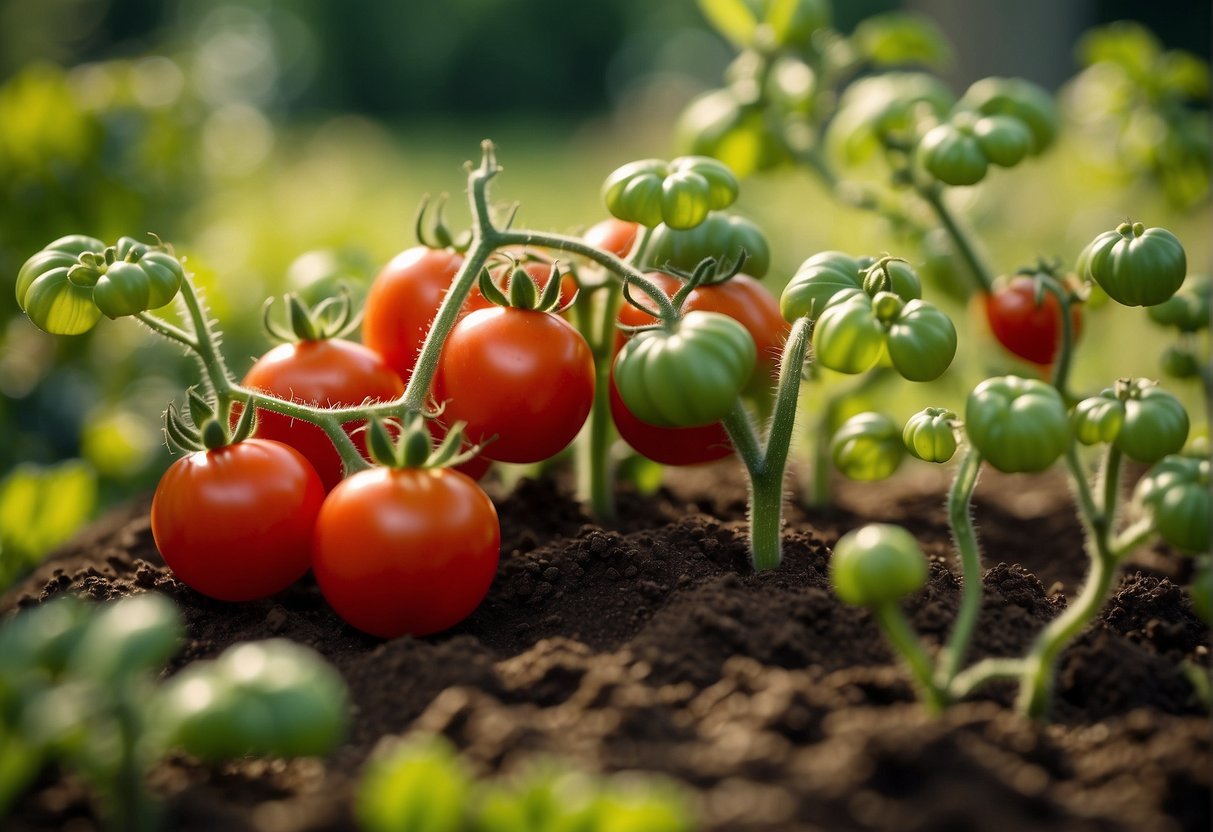
Before starting, it is important to choose the right variety of tomato for your needs. Determinate tomatoes are bush-like and grow to a certain height, while indeterminate tomatoes are vine-like and can grow indefinitely. It is also important to consider the climate in your area, as certain varieties may be better suited for different temperatures and humidity levels. Once you have chosen your tomato variety, it is time to start preparing your garden.
Choosing the Right Tomato Varieties
When it comes to growing tomatoes, choosing the right variety is crucial for success. With so many options available, it can be overwhelming for beginners to decide which type of tomato to plant. In this section, we will discuss two important factors to consider when choosing tomato varieties: determinate vs. indeterminate and heirloom vs. hybrid.
Understanding Determinate and Indeterminate Tomatoes
Determinate and indeterminate refer to the growth habit of a tomato plant. Determinate tomatoes grow to a certain height and then stop, while indeterminate tomatoes continue to grow and produce fruit until the first frost.
For beginners, determinate tomatoes are often a good choice because they are easier to manage and require less support. They are also a good option for those with limited space, as they tend to be more compact. However, indeterminate tomatoes generally produce more fruit and have a longer growing season.
Heirloom vs. Hybrid Varieties
Another important factor to consider when choosing tomato varieties is whether to go with heirloom or hybrid varieties. Heirloom tomatoes are open-pollinated, meaning they are pollinated by natural means such as wind or insects. They are often prized for their unique flavors and characteristics, but they can be more susceptible to disease and pests.
Hybrid tomatoes, on the other hand, are the result of cross-breeding two or more different tomato varieties. They are often bred for specific traits such as disease resistance, higher yields, or uniformity in size and shape. While they may not have the same unique flavors as heirloom varieties, they are often more reliable and easier to grow.
When it comes to choosing specific varieties, there are many options to consider. Cherry tomatoes, such as the Sweet 100 or Sun Gold varieties, are popular for their sweet flavor and bite-sized fruits. Beefsteak tomatoes, like the Brandywine or Cherokee Purple, are larger and meatier, making them a great option for sandwiches and salads. Roma tomatoes are a popular choice for sauces and canning, while pear and grape tomatoes are great for snacking.
In conclusion, choosing the right tomato variety is an important step for beginners looking to grow their own tomatoes. By considering factors such as determinate vs. indeterminate and heirloom vs. hybrid, as well as specific varieties, gardeners can ensure a successful and enjoyable growing experience.
Starting Tomatoes from Seeds
Seed Starting Basics
Starting tomatoes from seeds is a great way for beginners to get into gardening. It’s an affordable way to grow your own plants, and it allows you to choose from a wider variety of tomato cultivars than what you might find at your local nursery.
To start, you’ll need a few basic supplies: tomato seeds, seed starting mix, containers, and grow lights or a sunny window. You can purchase these supplies at a garden center or online.
Start by filling your containers with seed starting mix. Moisten the soil with water, and then plant your seeds according to the instructions on the seed packet. It’s important to not plant the seeds too deep, as they need sunlight to germinate.
After planting, cover the containers with plastic wrap or a clear plastic lid to create a mini greenhouse. This will help to keep the soil moist and warm, which will aid in germination.
Germination Conditions
Tomato seeds need warm and moist conditions to germinate. They also need plenty of sunlight once they’ve sprouted. To achieve these conditions, place your containers in a warm location, such as on top of a refrigerator or near a heat source.
Once the seeds have sprouted, remove the plastic cover and place the containers under grow lights or in a sunny window. If you’re using grow lights, keep them on for 12-16 hours per day.
It’s important to keep the soil moist but not waterlogged, as this can lead to fungal diseases. Once the seedlings have grown their first set of true leaves, you can transplant them into larger containers or directly into the garden.
Overall, starting tomatoes from seeds is a fun and rewarding experience for beginners. With the right conditions and care, you’ll be able to grow healthy and delicious tomato plants in no time.
Planting and Transplanting
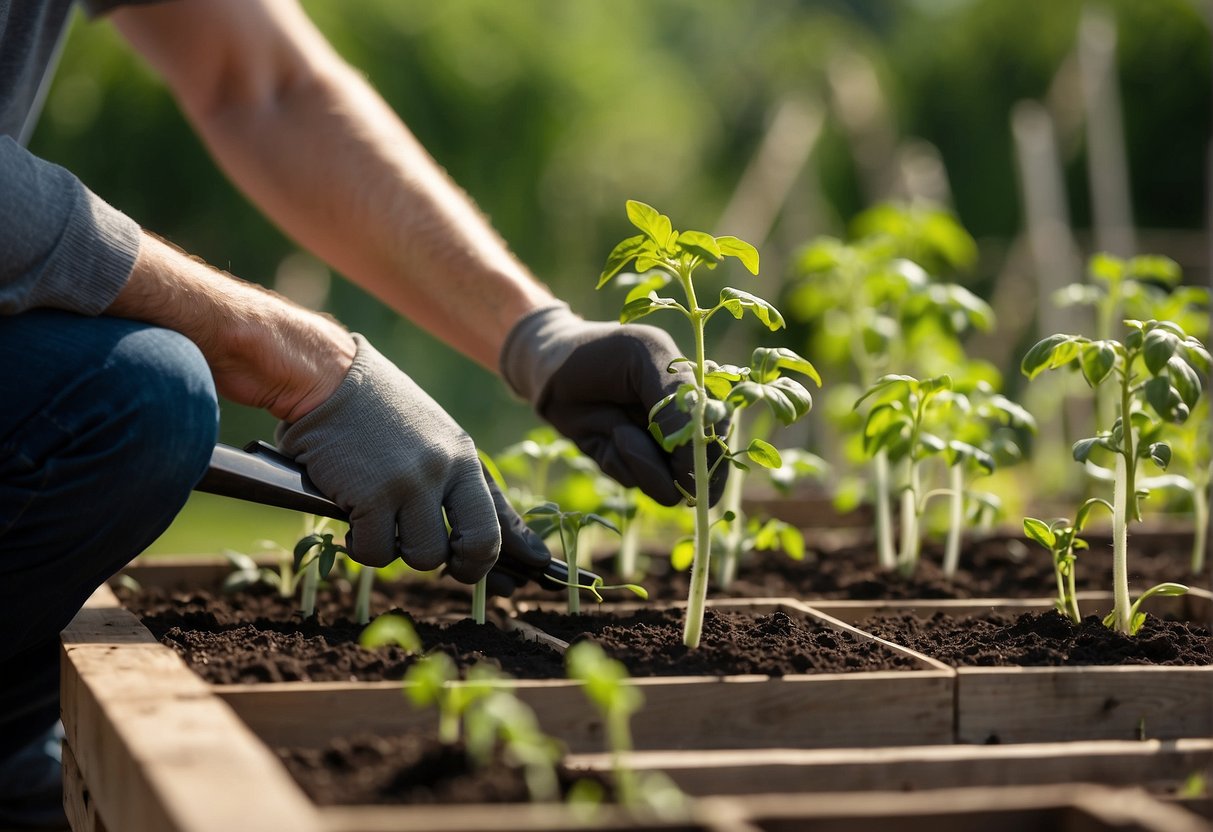
Soil Preparation
Before planting tomatoes, it is essential to prepare the soil. The soil should be well-draining, loose, and rich in nutrients. To achieve this, one can add compost or aged manure to the soil. Compost helps to improve soil structure and fertility, while aged manure adds organic matter and nutrients.
It is also crucial to test the soil’s pH level. Tomatoes grow best in soil with a pH range of 6.0 to 7.0. If the soil pH is too low, one can add lime to raise it. However, if the pH is too high, one can add sulfur to lower it.
Transplanting Seedlings
Tomatoes can be grown from seeds or purchased as seedlings. If growing from seeds, it is recommended to start them indoors six to eight weeks before the last frost date. Once the seedlings have grown to about six inches tall, they can be transplanted into the garden.
When transplanting seedlings, it is essential to choose a spot with full sun exposure. The planting hole should be deep enough to cover the stem up to the first set of leaves. This helps to encourage root growth and stability.
It is also recommended to add a layer of mulch around the base of the plant. Mulch helps to retain moisture in the soil and suppresses weed growth.
Overall, planting and transplanting tomatoes requires proper soil preparation and attention to detail. By following these tips, beginners can successfully grow healthy and productive tomato plants.
Tomato Plant Care
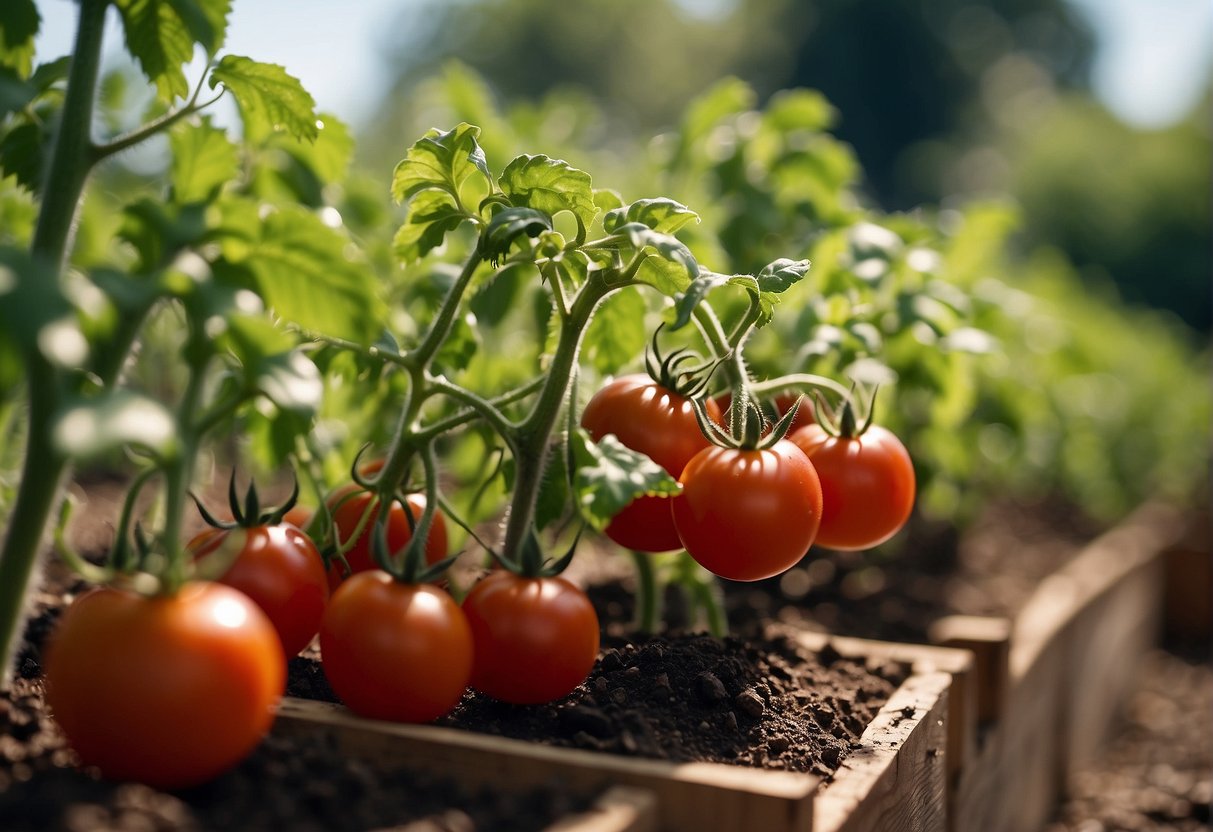
Growing tomatoes can be a rewarding experience for beginners. However, it is important to take proper care of the plants to ensure a healthy and productive harvest. Here are some tips for tomato plant care:
Watering and Fertilizing
Tomatoes require regular watering to thrive. It is important to water deeply and consistently, ensuring that the soil is evenly moist but not waterlogged. It is recommended to water the plants at the base, avoiding getting water on the leaves, as this can lead to fungal diseases.
Fertilizing is also crucial for healthy tomato plants. A balanced fertilizer with equal amounts of nitrogen, phosphorus, and potassium is ideal. Fertilizer should be applied every two to three weeks during the growing season.
Supporting and Pruning
Tomato plants need support to prevent them from falling over or breaking under the weight of the fruit. Staking or caging are popular methods of support. Staking involves tying the main stem of the plant to a stake, while caging involves placing a wire cage around the plant.
Pruning is also important for tomato plants. Removing the suckers, or small shoots that grow between the main stem and the branches, can help the plant focus its energy on producing fruit instead of foliage.
Managing Pests and Diseases
Tomato plants are susceptible to a variety of pests and diseases, including aphids, fungal diseases, and fusarium wilt and verticillium. To prevent these issues, it is important to practice good garden hygiene, including removing weeds and debris and ensuring good drainage.
Companion planting with basil can also help deter pests and improve the flavor of the tomatoes. If pest or disease issues arise, insecticides or disease-resistant varieties can be used to manage the problem.
Overall, taking proper care of tomato plants involves regular watering and fertilizing, supporting and pruning the plants, and managing pests and diseases. By following these tips, beginners can enjoy a successful tomato harvest.
Harvesting and Enjoying Tomatoes

When and How to Harvest
Harvesting tomatoes at the right time is crucial to ensure they are flavorful and juicy. The best time to harvest tomatoes is when they are fully ripe, which is when they are firm and have a deep, rich color. To check if they are ripe, gently squeeze the tomato – it should feel slightly soft but still firm.
To harvest the tomato, gently twist it off the vine or use a sharp pair of scissors or pruning shears to cut the stem just above the tomato. Be careful not to damage the tomato or the plant when harvesting.
Storing and Preserving Tomatoes
Homegrown tomatoes are best enjoyed fresh, but if you have an abundance of ripe tomatoes, there are several ways to store and preserve them for later use.
One option is to store them at room temperature, out of direct sunlight, for up to a week. Make sure to check them regularly and use any that are starting to soften or show signs of decay.
Another option is to refrigerate them, which can extend their shelf life by a few more days. However, refrigeration can also affect the flavor and texture of the tomato, so it’s best to use them as soon as possible after refrigeration.
If you have green tomatoes that have not yet ripened, you can store them in a paper bag with an apple or banana, which will release ethylene gas and help them ripen faster.
Lastly, if you have an abundance of ripe tomatoes, you can preserve them by canning, freezing, or making tomato sauce or salsa. There are many resources available online for safe and effective preservation methods.
Overall, harvesting and enjoying homegrown tomatoes is a rewarding experience that can provide delicious, fresh produce for your family. With full sun and proper care, you can enjoy a bountiful harvest of ripe, juicy tomatoes.
Frequently Asked Questions
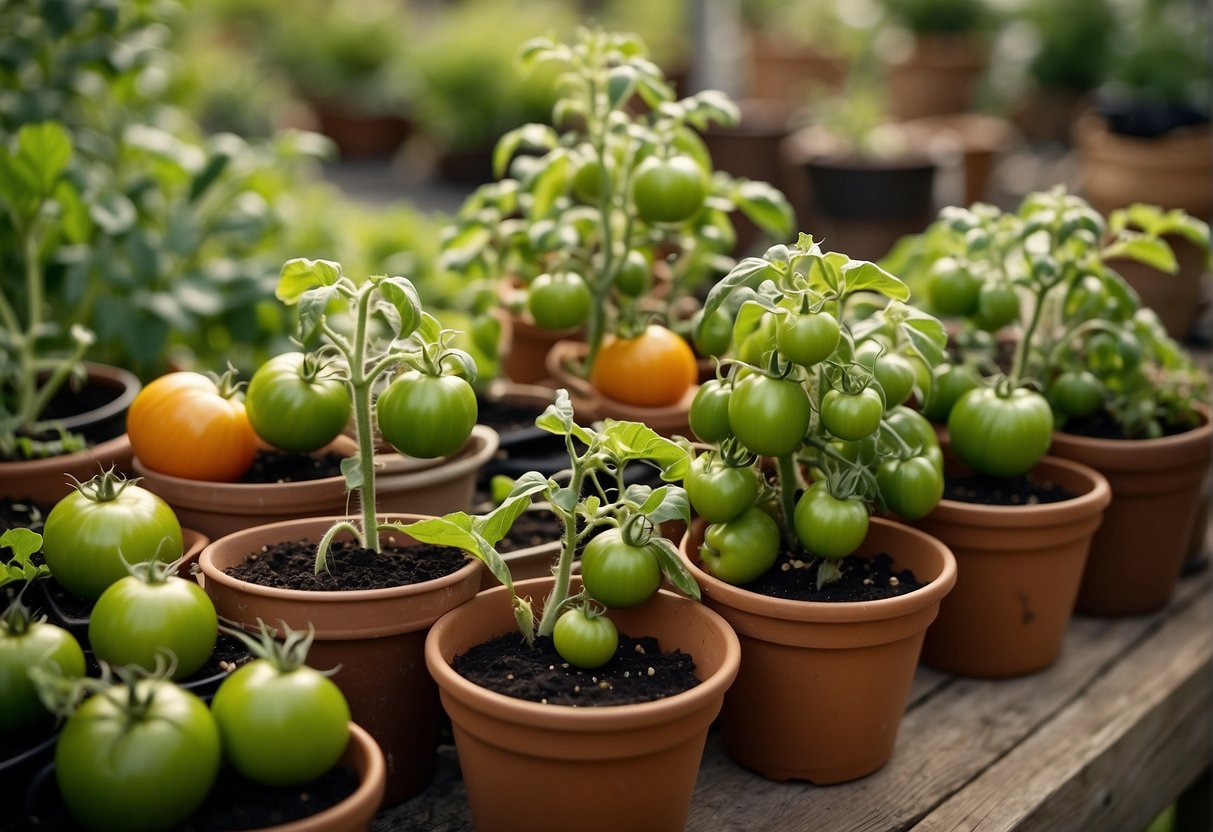
What is the best soil composition for growing healthy tomato plants?
Tomatoes prefer well-draining soil that is rich in organic matter. A good soil composition for growing healthy tomato plants is a mixture of equal parts of compost, peat moss, and vermiculite or perlite. The pH level of the soil should be between 6.0 and 6.8.
How often should tomato plants be watered and what is the optimal amount?
Tomato plants should be watered deeply once a week, providing about an inch of water. However, the frequency of watering depends on the weather conditions and the type of soil. In hot and dry weather, tomato plants may require more frequent watering. Overwatering can cause root rot, so it is important to avoid watering too frequently.
What are the signs of nutrient deficiency in tomato plants and how can it be corrected?
The signs of nutrient deficiency in tomato plants include yellowing of leaves, stunted growth, and poor fruit development. Common nutrient deficiencies include nitrogen, phosphorus, and potassium. To correct nutrient deficiencies, you can use organic fertilizers or add compost to the soil.
How can I protect my tomato plants from common pests and diseases?
Common pests that attack tomato plants include aphids, whiteflies, and tomato hornworms. Diseases that affect tomato plants include blight and blossom end rot. To protect tomato plants from pests and diseases, it is important to practice good sanitation and crop rotation. You can also use organic pest control methods such as neem oil and insecticidal soap.
At what stage should tomato plants be pruned and what is the correct technique?
Tomato plants should be pruned when they are about 12-18 inches tall. The correct technique for pruning tomato plants is to remove the suckers, which are the small shoots that grow in the crotch between the stem and the branches. This helps the plant focus its energy on producing fruit.
When is the right time to harvest tomatoes, and how can I tell if they are ripe?
Tomatoes should be harvested when they are fully ripe, which is when they are firm and have a deep, even color. You can tell if a tomato is ripe by gently squeezing it. If it gives slightly under pressure, it is ripe. Tomatoes should be harvested before they become overripe or start to rot on the vine.

